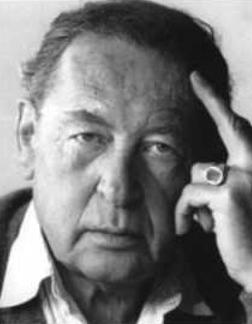Liberty Matters
How Should the State be Modeled?

In The State (1985), Anthony de Jasay models the state as a maximizing, unitary actor. Specifically, he writes:
Depending on the scale and perspective of the analysis, it is possible to regard the state in several ways. One is to take it as an inanimate tool, a machine. It has no ends and no will; only persons have ends. Explanation and prediction of its movements must, therefore, deal at one remove with the persons who wield the tool and shift the levers of the machine. Another is to merge the machine and the people who run it, and consider the state as a live institution which behaves as it would if it had a will of its own and a single hierarchy of ends; as if it could choose between alternatives and in doing so seemed to conform to the rudiments of rationality. We have throughout adopted the latter view, not because it is more realistic (neither is), but because it looks the most fertile in plausible deductive consequences.[40]
In a subsequent paper, Jasay (2010) defends this approach indicating that:
the critique [of the unitary actor model] was deserved in the sense that I should have anticipated and met it explicitly rather than take for granted that readers will see the advantage of imagining the state as a unitary actor about whose decisions certain predictions can be made, instead of treating it more realistically as a chaotic and largely unpredictable witches’ cauldron that at best can be described but that defies theory.[41]
However, there is yet another approach to the unitary actor view.
This alternative models government as an intense competition among maximizing individuals seeking to control the machinery of the state, which includes the tools of social control and domination over others. The emphasis is on competing interests and arenas of power, and the contest is one of who is going to outcompete—whether violently or nonviolently—their rivals for control of this machinery. There may be rules governing the competition for control of the machinery (e.g., elections), although there does not have to be (e.g., military coup). Further, those competing to secure the control of the machinery may very well share common interests (perhaps none of them would like to see the machinery completely removed) in addition to conflicting interests (each prefers that he controls the machinery). Finally, the number and nature of the rivals are not fixed but, rather, constantly change. That is, new competitors may enter and attempt to seize control of the machinery and the significant rents that are associated with it. The key point is that this alternative appreciates that both securing control over the machinery of violence and using that machinery is not some decision made by an abstract, unitary entity that can be treated as a maximizing actor. Instead, it is the result of an ongoing, intense competition by rivals who seek the profits associated with the control of that machinery.
Contrary to what Jasay suggests in his 2010 paper, the alternative to the unitary actor model is not one which is “largely unpredictable” or that “defies theory.” Rather, instead of seeing “the state” as the unit of analysis, focus should be on purposive individuals who pursue their goals within a specific institutional environment consisting of informal and formal rules. These institutions create payoffs which influence how those within the system behave regarding the contest for control of the machinery of the state. Comparative institutional analysis allows us to make pattern predictions of how we can expect people to act in different settings and environments.
The approach I am suggesting here offers potential insight into the rivalrous, and often violent, clashes between groups and classes often associated with the state. At the same time, it offers insight into why some governments appear relatively limited compared to others. While all states are backed by the Gun, the means of controlling and using the Gun is a result of the various institutions at work.
Endnotes
[40.] Jasay, Anthony de. 1985. The State. Indianapolis, Ind.: Liberty Fund. OLL online edition: </titles/319>. Quote </titles/319#Jasay_0154_682>.
[41.] _____. 2010. “The Maximizing State,” The Independent Review: A Journal of Political Economy. 15 (1): 5-18. Available online: <https://www.independent.org/pdf/tir/tir_15_01_1_jasay.pdf>. Page 6.
Copyright and Fair Use Statement
“Liberty Matters” is the copyright of Liberty Fund, Inc. This material is put on line to further the educational goals of Liberty Fund, Inc. These essays and responses may be quoted and otherwise used under “fair use” provisions for educational and academic purposes. To reprint these essays in course booklets requires the prior permission of Liberty Fund, Inc. Please contact oll@libertyfund.org if you have any questions.